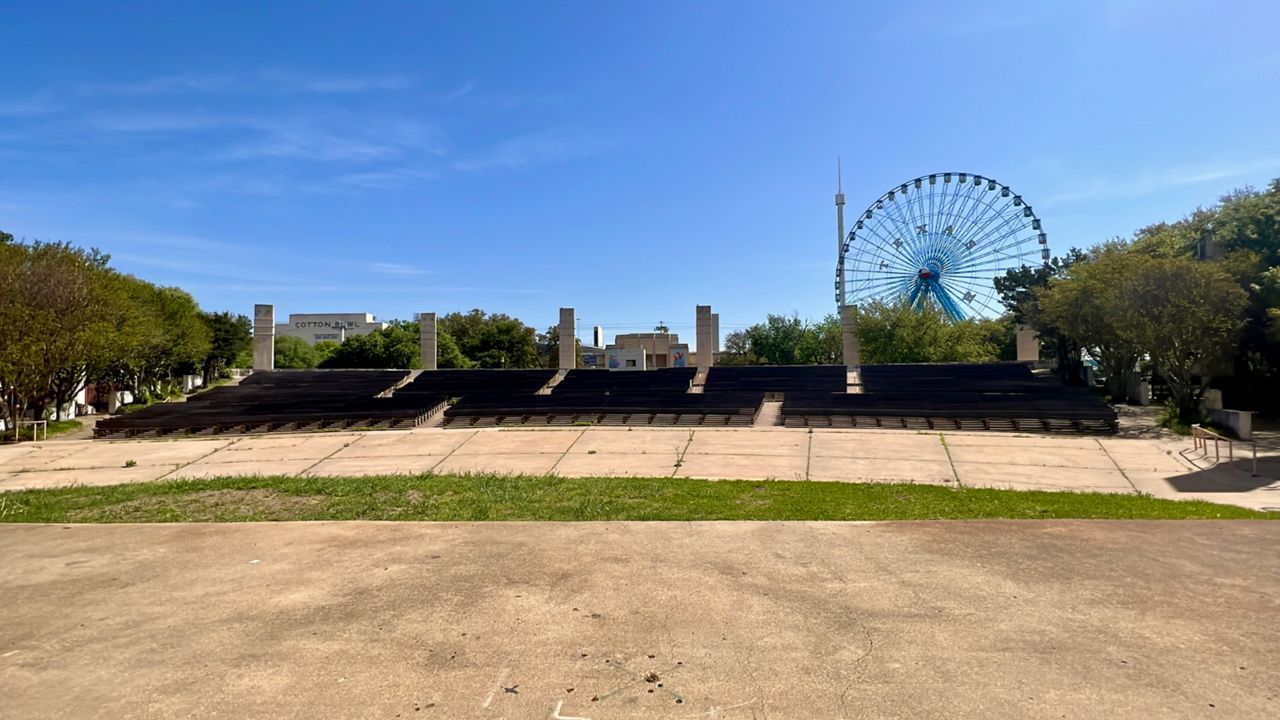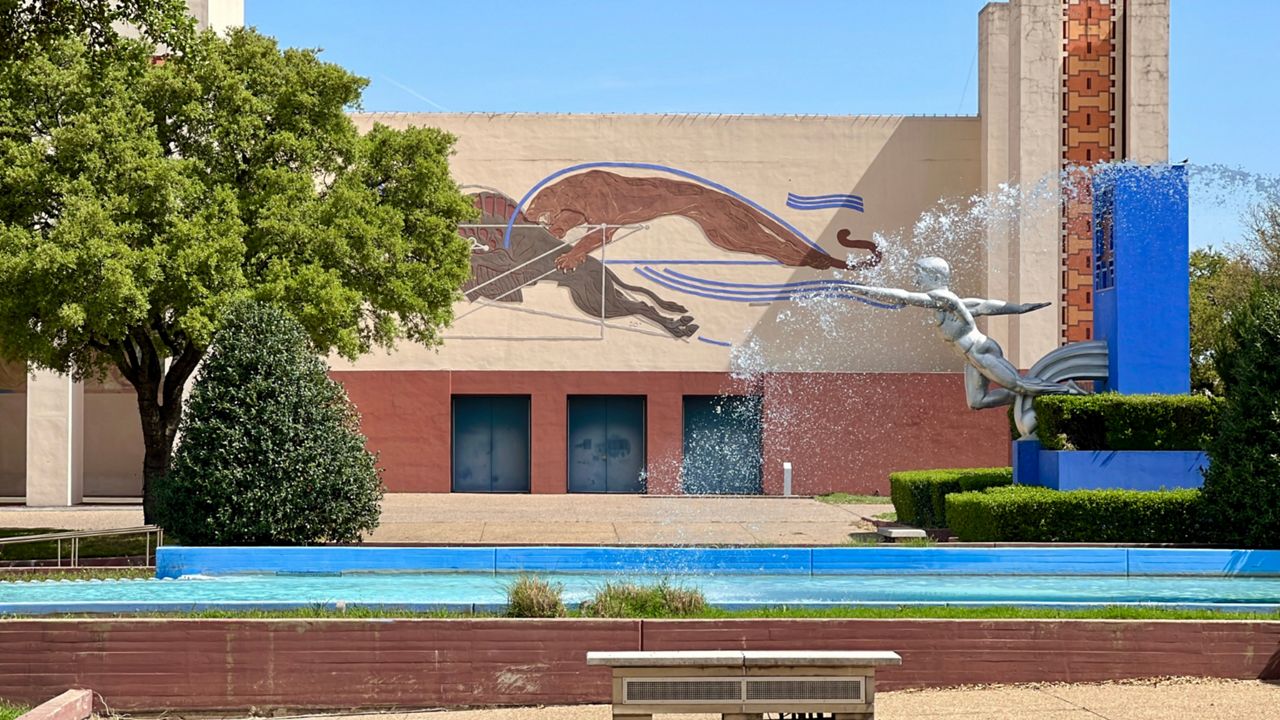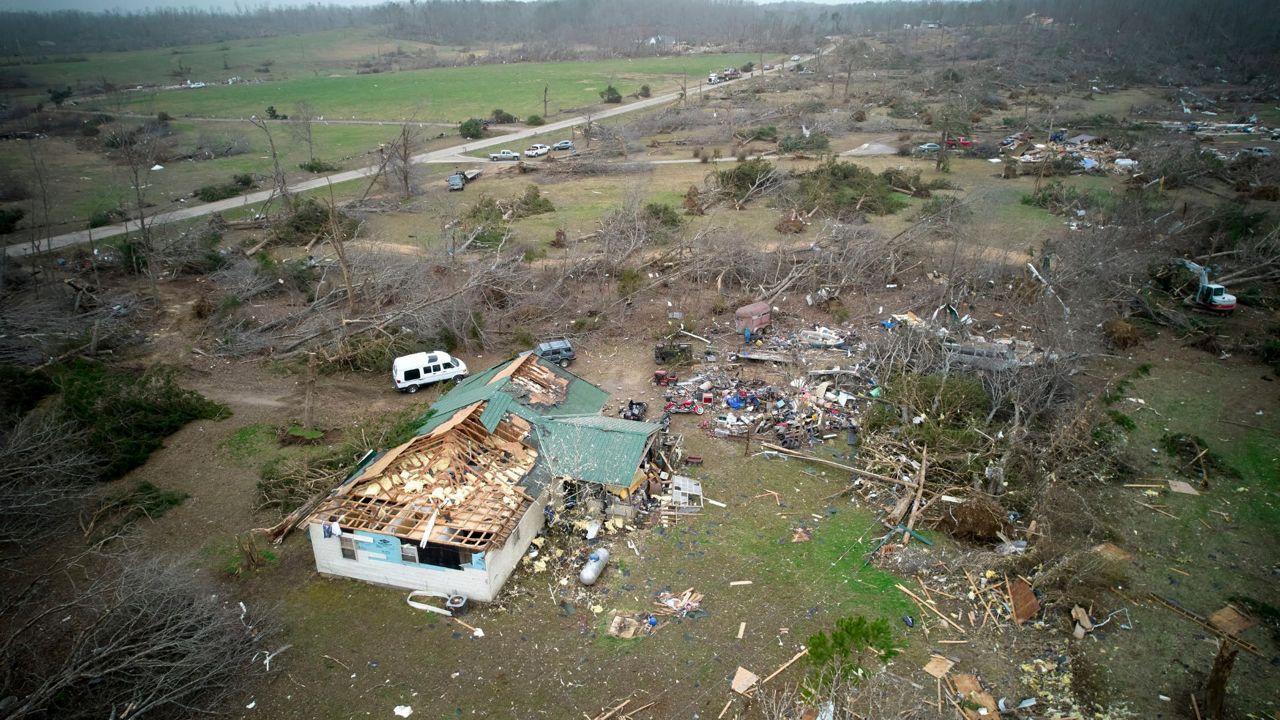DALLAS — If you’ve ever been to the State Fair of Texas or attended the Red River Rivalry game, you’ve been to Fair Park in Dallas. It’s one of Dallas’ busiest tourist destinations, but it hasn’t received the upkeep it needs. That’s why in November, voters will get a chance to approve funding to do so.
The Brimer Bill, which earmarks funding for stadiums, convention centers and entertainment districts, was amended for the first time last year to allow financing of Fair Park. Parks were excluded from the original legislation, but because of the amendment, parts of Fair Park are getting to benefit from the deal, if approved.
“The Brimer Bill excludes parks, but Fair Park’s a little different. It’s there to generate tourism and people that will stay in hotels. And that’s why it utilizes hotel occupancy tax as a reinvestment tool, to build things to reinvest in them so that you can continue to grow Texas as tourism economy,” said Fair Park First executive director Brian Luallen. “We were able to receive bipartisan support in Austin for a number of potential improvements at designated facilities. This is a unique carve-out, because this isn’t available to any other park in the state of Texas.”
Luallen noted the Brimer Bill was first passed in the late ‘90s as a funding mechanism to build the American Airlines Center, which spurred development of the Victory Park area of Dallas. If residents approve this funding in November, it’ll be an 80-20 split, with the majority of the money going to the Convention Center rebuild, and 20% going to Fair Park updates.
Luallen emphasized this won’t be at any cost to local taxpayers, since the bill uses hotel occupancy taxes. The $250 million in funding would be the largest capital investment in Fair Park.
“The expansion of the Kay Bailey Hutchison Convention Center, when it goes to the ballot in November, allows not only an opportunity to improve Fair Park but to support the rest of our tourism economy in the downtown area, grow our convention business,” Luallen said. “And while stimulating the economy, there’s no cost to local taxpayers. Your property tax won’t go up. And unless you stay in a hotel as a citizen of Dallas on a regular basis, this won’t cost you a dime. So it’s an amazing opportunity to make our city, Fair Park and the convention center much, much better and create a lot of new opportunities, at no cost.”
If you attend an event on the Fair Park grounds, you may not notice the lack of maintenance and upkeep. But on closer inspection, you’ll see leaky roofs, poor electrical systems, HVAC issues and major cracks. Luallen took Spectrum News 1 on a quick tour of the Cotton Bowl, the Automobile Building and the Band Shell, pointing out the many problems at each stop.
One of the women’s restrooms inside the Cotton Bowl previously had major issues, sinking three feet and having to be redone. That’s the only reason it looked as “nice” as it did, Luallen noted. The stadium also has congested walkways and concessions stands in front of entrance gates, non-winterized pipes and crumbling walls.
“Even though the Cotton Bowl is more than tripled in its original capacity, they have not tripled the restrooms or the concessions,” Luallen said. “We’re struggling with these issues of inadequate electricity and things like that. We’re trying to pursue major events. We’re part of Dallas’ bid for World Cup in 2026 and in order to host an event of that magnitude, the facilities simply have to be a little nicer. The reality is we can’t meet the specs in the existing condition and that continues to reduce the facility’s capability of growing sustainable revenue over time.”
A Fair Park Master Plan identified more than $333 million in critical projects within the 277-acre park that can’t wait any longer. Projects like the outdated 1936 Band Shell, with its rough exteriors, lack of lighting and house sound, which make it unusable for many events. The audience is forced to sit several yards back from the stage under the hot sun, on rusty wooden seats. The inside of the Band Shell is a whole different issue in itself, with outdated green rooms for performers, unsightly restrooms and an overall need of a facelift.
“And there used to be a lot of concerts programmed here. The last time they upgraded it, they ran short on cash and so they never put back in-house lighting and house sound. So it’s really tough,” Luallen said. “We got to be honest about the fact that the conditions of these buildings are just very poor.”

The exhibition spaces like the Automobile Building and Centennial Hall are riddled with cracks and are in need of upkeep. The bas-reliefs on the walls are in jeopardy of falling off because of the underlayment and the structure’s condition.
“We have significant concerns about not only the art itself, but the structures. They simply haven’t been maintained in the way that we would expect them to be here and the significance of Fair Park,” Luallen said. “You have the single largest collection of art deco in the entire world in one location right here in Fair Park. There’s something very special about that. Special enough to have us designated as a national historic landmark.”

Luallen says Fair Park isn’t being kept up with like it deserves to be.
“And people talk about Fair Park as a crown jewel and it really is, but unfortunately this crown jewel hasn’t been polished in the way you would expect, and a lot of it is quite literally crumbling,” Luallen said. “These are our two biggest exhibition buildings. They are the most used buildings on campus, outside of the Music Hall. They drive most of our biggest events. If we don’t do something to repair these, then our grandparents’ memories, our own memories and what could be our grandchildren’s memories are really all in jeopardy. We have to restore these buildings so that they’re available for future generations.”
The Cotton Bowl, Fair Park Coliseum, the Band Shell and Music Hall and the Automobile Building and Centennial Hall exhibition spaces will all potentially be getting money for these facelifts if voters approve the deal in November. Luallen says the majority of the $250 million will likely go toward The Cotton Bowl upgrades due to the attendance levels.
“The State Fair of Texas for example, draws in people from all around the world all around the nation to Fair Park. And it troubles me a little bit as a Dallasite to see the condition of this part because it reflects on us and here’s an amazing opportunity to really improve it. Make sure this is around for many more generations at no cost to local taxpayers. To me, it’s a no-brainer”
Fair Park is also getting a state-of-the-art community park on the grounds, which will replace Lot 10 near the Dos Equis Pavilion. The renderings of the park were released in April 2022, and the park is scheduled to open in fall of 2024.
CORRECTION: A previous version of this story stated in the headline that the funding amount to renovate Fair Park would be $150 million. It's in fact $250 million. This has been corrected on all publications. (April 24, 2022)







)


